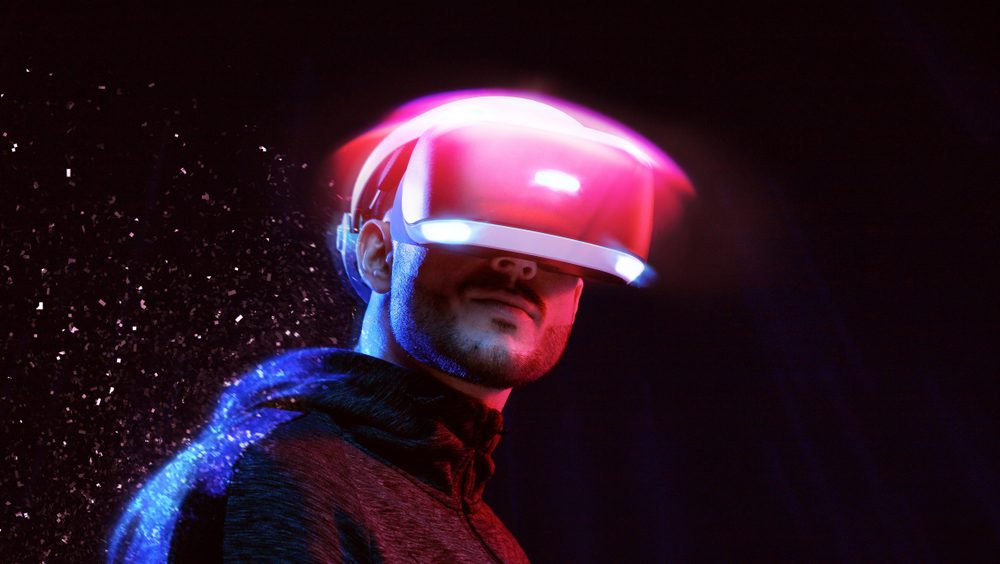As humanity units its sights on Mars colonization, the thought of making a metaverse—a completely immersive, digital surroundings—on the Pink Planet sparks each pleasure and skepticism. Can astronauts, settlers, and researchers develop digital worlds that mimic and even surpass Earth-based experiences? On this article, we discover the technological, logistical, and philosophical components driving the notion of developing metaverse simulations on Mars, analyzing potential advantages, challenges, and long-term implications.
1. The Rationale for a Martian Metaverse

Constructing a metaverse on Mars shouldn’t be merely science-fiction—it aligns with a number of essential aims:
Psychological Nicely-Being: Mars settlers will face excessive isolation, restricted social interplay, and a harsh surroundings. A digital actuality (VR)-based neighborhood might supply social engagement, leisure, and psychological well being help throughout lengthy missions.
Analysis and Coaching: Scientists needing to review Martian geology or carry out distant upkeep might use augmented actuality (AR) overlays and digital twins of habitats—permitting them to check procedures in a secure, simulated surroundings earlier than performing in the actual world.
Cultural Continuity: Establishing colleges, cultural venues, and even sports activities arenas inside a digital Martian metaverse ensures that future generations born on Mars retain connections to Earth’s heritage, arts, and shared historical past.
By leveraging AI-driven simulation platforms, mission planners can optimize habitat layouts, take a look at life-support methods, and rehearse emergency situations—all inside a managed, digital setting.
2. Key Applied sciences Underpinning a Martian Metaverse

Transplanting a metaverse idea to Mars is determined by a number of rising breakthroughs:
Low-Latency Communication Networks
Laser-based Optical Hyperlinks: In contrast to radio alerts, which undergo multi-minute delays between Earth and Mars, laser communications (e.g., NASA’s Deep Area Optical Communications) can cut back latency, making real-time VR interactions extra possible.
Native Mesh Networks: Inside Martian habitats, high-speed wi-fi mesh networks would join VR headsets, haptic units, and AR wearables—guaranteeing clean information switch between colonists.
On-Planet Computational Infrastructure
Edge Computing Nodes: Deployable edge servers stationed in Martian habitats can deal with the heavy graphics and AI processing required for photorealistic simulations. This minimizes dependency on Earth-based information facilities.
Power-Environment friendly GPUs: As a result of energy on Mars is restricted, energy-optimized GPU clusters (doubtlessly powered by nuclear or photo voltaic arrays) are important to render high-fidelity digital environments with out overtaxing the habitat’s assets.
Superior VR/AR {Hardware}
Radiation-Hardened Headsets: Publicity to cosmic rays and photo voltaic radiation necessitates shielded VR headsets and haptic fits that defend electronics from harsh circumstances whereas delivering immersive experiences.
Haptic Suggestions and Bio-Sensors: To copy tactile sensations—like “feeling” Martian soil or zero-gravity actions—haptic gloves and motion-tracking sensors might be essential. They permit customers to work together with digital objects as in the event that they existed within the bodily realm.
AI-Powered Content material Era
Procedural World Constructing: By means of procedural technology algorithms, huge Martian landscapes might be recreated dynamically, saving storage and enabling distinctive, individualized experiences for every person.
Digital Twin Simulations: Machine studying can use real-time sensor feeds to assemble correct digital twins of Martian habitats, scientific devices, and terrain—offering colonists with up-to-the-minute situational consciousness in VR.
3. Potential Use Circumstances for a Martian Metaverse

3.1 Digital Habitat Design and Testing
Earlier than developing a bodily module on Mars, engineers might construct a 3D simulation of the proposed habitat throughout the metaverse. By donning VR gear, crew members can stroll by means of corridors, confirm spatial layouts, and establish design flaws—lowering pricey post-deployment modifications.
3.2 Social Hubs and Cultural Facilities
Inside a Mars-based metaverse, settlers would possibly collect in digital plazas that replicate iconic Earth areas (e.g., Parisian cafés or Tokyo road markets). These digital social hubs supply:
Social Interplay: Avatars allow settlers to satisfy, socialize, attend digital live shows, or rejoice cultural festivals—assuaging emotions of isolation.
Instructional Alternatives: Faculties and universities can stream lectures from Earth in immersive school rooms, guaranteeing continuity in schooling.
Inventive Expression: Artists and musicians on Mars can carry out stay—broadcasting into the metaverse—permitting each Martian and Earth audiences to collaborate and luxuriate in artwork collectively.
3.3 Distant Scientific Collaboration
Scientists on Earth can use the Martian metaverse to nearly “step” onto the Martian floor, analyzing geological formations in actual time. By combining augmented actuality overlays—highlighting tunneling paths or pattern composition—researchers acquire a collaborative, multi-disciplinary workspace regardless of the planetary distance.
3.4 Psychological Well being and Recreation
Prolonged missions pose vital psychological dangers. A well-designed metaverse can supply:
Nature Simulations: Digital forests, seashores, or acquainted Earth landscapes assist cut back stress and help emotional well-being.
Interactive Gaming: Multiplayer video games set in imaginative worlds enhance morale and foster robust staff bonds.
Tailor-made Remedy Classes: Psychologists can conduct guided remedy inside VR environments—tailoring classes to particular person colonists’ wants.
4. Challenges and Constraints

Whereas the promise of a Martian metaverse is compelling, a number of hurdles should be addressed:
Bandwidth and Latency Limitations
Earth–Mars Lag: Even with laser communications, the one-way delay can vary from 4 to 24 minutes. Important updates—like real-time life-support alerts—can not rely solely on Earth-based servers. Subsequently, most processing and storage should happen domestically on Mars.
Energy Consumption
Power Prioritization: Martian colonies depend upon photo voltaic panels or nuclear reactors. Allocating adequate vitality to maintain high-performance computing for VR might detract from important life-support methods except energy-efficient {hardware} is employed.
{Hardware} Sturdiness
Mud and Radiation: Martian regolith is abrasive, and cosmic radiation can degrade electronics over time. Radiation-hardened and dust-sealed VR/AR units are very important—however presently costly and hulking.
Content material Creation and Sustainability
Ongoing Growth Prices: Constructing and sustaining massive, charming digital worlds requires steady updates. Colonies should prepare personnel in sport improvement, 3D modeling, and AI to maintain the metaverse recent and related.
Moral and Privateness Issues
Information Safety: With restricted computational oversight, guaranteeing that private information and communications throughout the metaverse stay safe is paramount—particularly if exterior cyber threats evolve.
Digital Nicely-Being: Balancing digital engagement with real-world duties is essential. Extreme dependence on a digital world could impair settlers’ motivation to deal with urgent environmental challenges on Mars.
5. Roadmap to a Martian Metaverse

To comprehend this imaginative and prescient, stakeholders ought to contemplate a phased method:
Part 1 – Earth-Based mostly Prototyping
Develop VR simulations of proposed Mars habitats and take a look at them with analog astronaut crews in Earth-based services (e.g., deserts, polar outposts).
Pilot AI-driven procedural terrain technology utilizing high-resolution Martian satellite tv for pc information to create sensible digital landscapes.
Part 2 – Orbital Testbeds
Deploy a mini-metaverse node on the Worldwide Area Station (ISS) or a Mars transit spacecraft. This node would take a look at low-gravity VR person experiences, information synchronization, and native edge computing.
Assess {hardware} efficiency below microgravity and radiation, refining designs for Martian deployment.
Part 3 – Early Martian Settlement
As the primary small habitats are constructed on Mars, introduce a primary VR neighborhood for coaching, habitat walkthroughs, and mission rehearsals.
Set up an area edge server cluster throughout the habitat to host important metaverse purposes—prioritizing life-support diagnostics, emergency drill simulations, and restricted social interactions.
Part 4 – Full-Scale Martian Metaverse
Develop {hardware} infrastructure throughout a number of habitats, leveraging photo voltaic farms or small modular nuclear reactors to energy high-performance computing nodes.
Launch content-creation workshops to coach Martian settlers in constructing digital areas, guaranteeing cultural authenticity and variety.
Combine the Martian metaverse with Earth’s networks for synchronized occasions—equivalent to joint live shows, conferences, and scientific symposiums—bridging the interplanetary neighborhood.
Constructing a metaverse on Mars is an formidable endeavor, merging frontier-space exploration with cutting-edge digital actuality and AI applied sciences. Whereas vital technical challenges—from communication delays to energy constraints—stand in the way in which, the potential advantages for psychological well-being, scientific analysis, and cultural continuity make the pursuit worthwhile. As people enterprise deeper into the photo voltaic system, a Martian metaverse might grow to be greater than only a digital curiosity—it would function a lifeline that retains future explorers related, impressed, and able to face the unknown.
Observe us on TWITTER (X) and be immediately knowledgeable concerning the newest developments…
Copy URL


